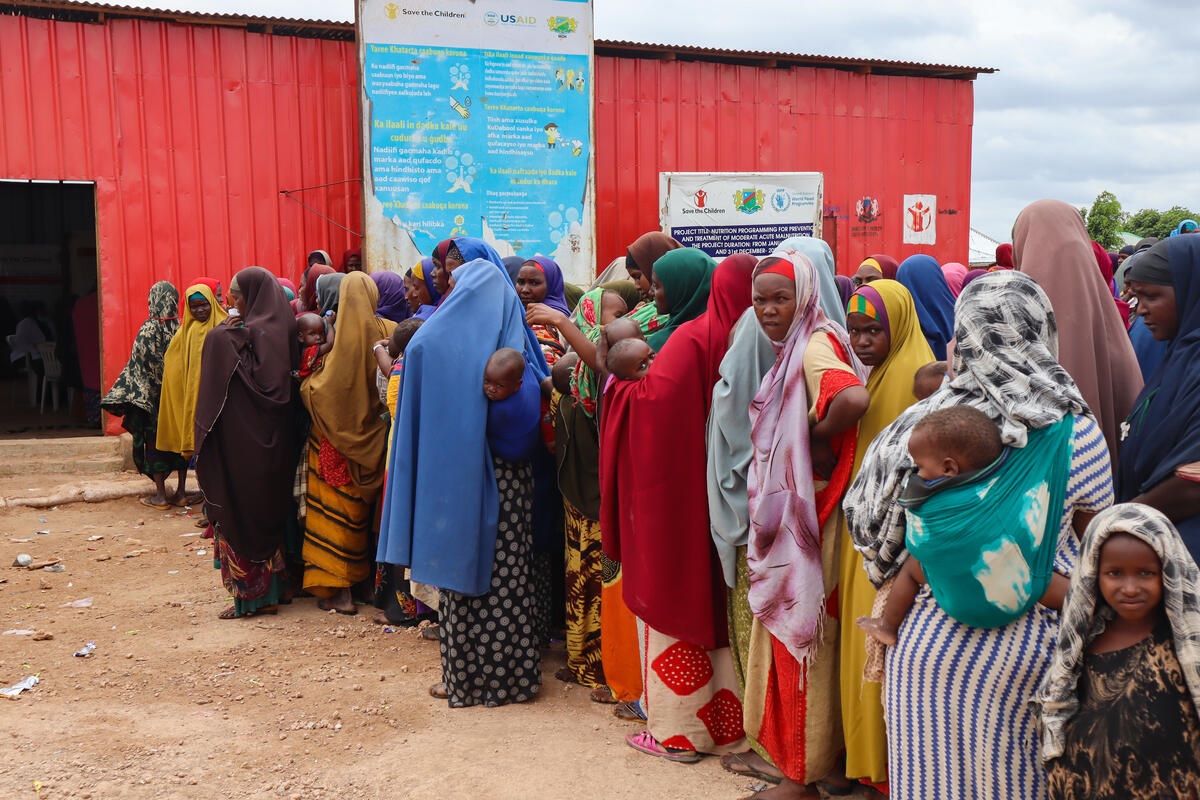MOGADISHU – The United Nations World Food Programme is delivering life-saving food and nutrition assistance to record numbers of people in Somalia, with over 4 million people a month receiving urgent humanitarian support to prevent famine in the face of the region’s worst drought in over 40 years.
The scale-up has helped keep the worst outcomes of Somalia’s hunger crisis at bay so far.
But the situation on the ground remains dire, with lives and livelihoods being lost. WFP is racing against time to avert a projected famine and a death toll that could reach the tens or even hundreds of thousands.

Additional information:
- Over the last six months, WFP has more than doubled the number of people reached with life-saving food and cash assistance from 1.7 million in April to 4.4 million people in August. A further 450,000 children and mothers received nutrition support from WFP in August, as the agency expands both the caseload and number of treatment sites.
- In September, WFP reached almost 4.1 million people with emergency food and cash relief and half a million malnourished children and mothers with malnutrition treatment services.
- WFP is working to continue this expansion, including in hard-to-reach areas, and increase investment in longer-term programming such as malnutrition prevention, which will help to reduce the number of people who need treatment.

- Nutrition prevention activities were almost entirely suspended from the second quarter of 2022 as WFP was forced to prioritize treatment services due to limited funds. The agency has resumed some prevention activities for children and pregnant or breastfeeding women and is working to do more.
- WFP is reaching new rural areas, including in the famine risk districts of Baidoa and Burhakaba, with food assistance and cash transfers. WFP’s mobile money transfers are an efficient way to getting assistance rapidly to people in hard-to-reach areas.
- WFP deployed a new helicopter in Somalia in September to deliver food assistance to hard-to-reach areas and get aid workers to the places they are needed most. The WFP-led Logistics Cluster is also using the helicopter to deliver humanitarian relief on behalf of other UN agencies and NGOs. The helicopter has so far conducted over 30 flights in September and October.
- WFP is the largest humanitarian agency in Somalia, with 12 offices across the country providing coverage in every state.
- WFP’s massive scale-up has largely been made possible thanks to timely support from key donors, particularly in recent months. It is essential that this is maintained. WFP has a funding gap of US$ 412 million / CAD$ 565.3 million across all activities for the next six months to March 2023, including a shortfall of US$ 315 million/ CAD$ 432.2 million for life-saving food relief and nutrition assistance.
The United Nations World Food Programme is the world’s largest humanitarian organization, saving lives in emergencies and using food assistance to build a pathway to peace, stability and prosperity for people recovering from conflict, disasters and the impact of climate change.
Featured image: Somalia, Baidoa, 12 October 2022 Nuuriya Ali Mohammed Nuur and her baby Mohammed Nuur Mohammed travelled to Baidoa from a rural town in Southwest state. After four failed rainy seasons, all of Nuuriya’s livestock died due to the drought. She lost ten cows and one donkey which supported her livelihood. She has ten children and was only able to bring four children with her and the oldest stayed behind with their father. There were several stops on her journey to Baidoa, including walking on foot until she reached transportation to reach the camp. Her child was weak and malnourished when she arrived, but with WFP assistance he is starting to gain weight and become healthier. With no expectation to return and nothing left for her at home, she now lives in an IDP camp on the outskirts of Baidoa town, receiving both WFP relief assistance and nutrition services. Photo: WFP/Geneva Costopulos
